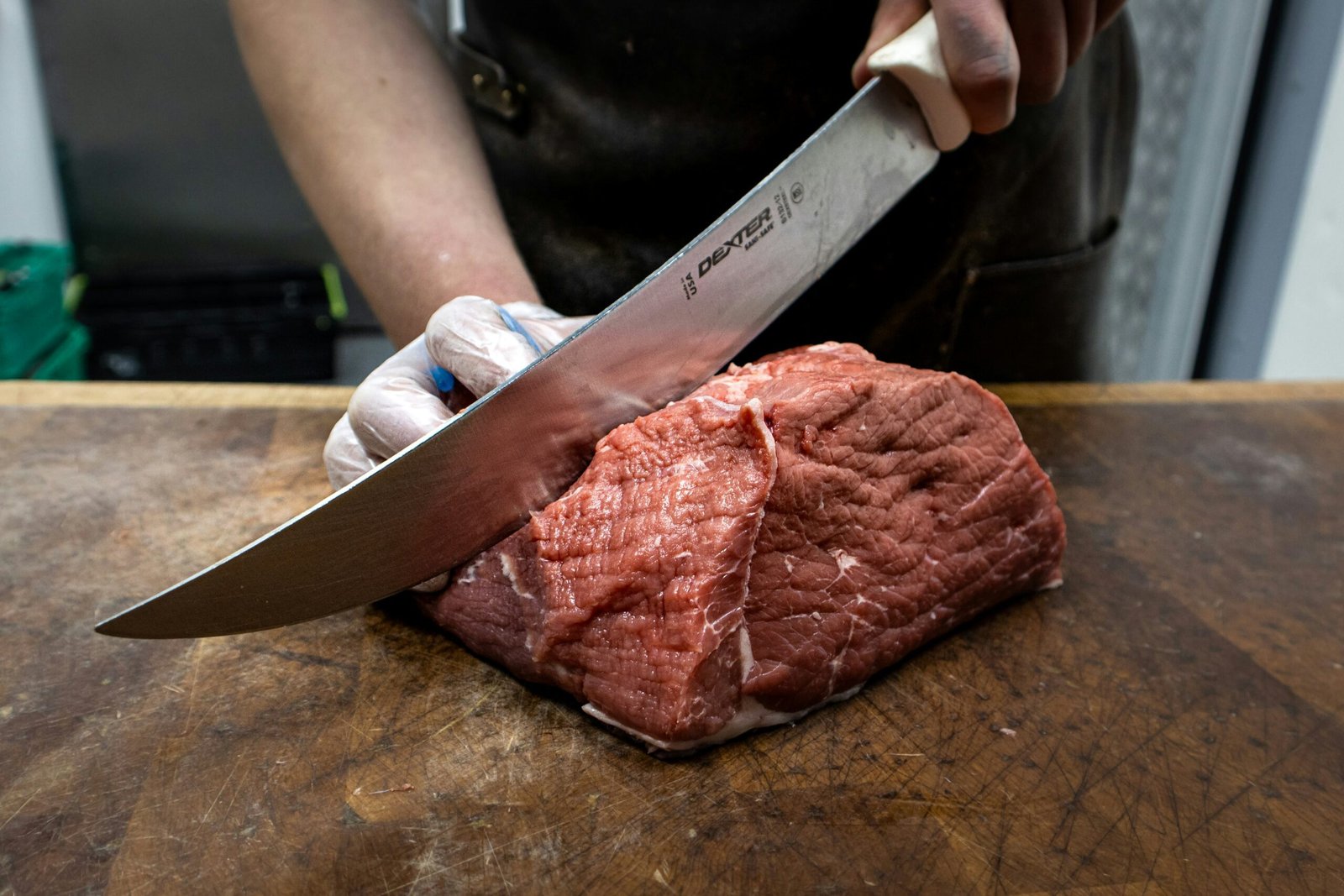Understanding Silverside Meat: What It Is and Why You Should Cook It
Silverside meat is a popular cut of beef derived from the hindquarters of the animal. Specifically, it comes from the outside of the hind leg, which is why it is characterized by a lean texture and substantial flavor. This cut is known for its connective tissue, which breaks down beautifully during the cooking process, resulting in tender, juicy meat. The name “silverside” originates from the silvery appearance of the tissue that surrounds the meat, which adds to its unique appeal in culinary preparations.
This versatile cut is not only appreciated for its robust flavor profile but is also a powerhouse of nutrition. Silverside is rich in protein and provides essential vitamins and minerals, making it an excellent choice for those seeking hearty and wholesome meals. The low-fat content of this meat allows it to be incorporated into various dishes without overwhelming calorie counts, which is particularly beneficial for health-conscious consumers.

Silverside can be used in a multitude of culinary applications, ranging from slow cooking and braising to roasting and grilling. In many cultures, it is often prepared as corned beef, where it is brined and seasoned, creating a flavorful and tender dish that pairs wonderfully with vegetables or in sandwiches. Additionally, silverside is well-suited for classic recipes such as pot roasts, delivering deep, rich flavors when cooked with aromatic herbs and spices.
Overall, silverside meat not only offers a delightful taste but also presents numerous health benefits. Its adaptability in various cuisines allows chefs and home cooks alike to experiment and innovate with their cooking techniques. Exploring the potential of silverside in the kitchen can lead to deliciously satisfying meals that highlight its robust characteristics, making it a worthy addition to any culinary repertoire.
Preparing Silverside for Cooking: Essential Tips and Techniques
When it comes to preparing silverside meat for cooking, selecting the right cut is the first and most critical step. At the butcher, look for a piece that has a good balance of lean meat and marbling. A well-marbled cut will generally result in a more flavorful and tender outcome when cooked. It is advisable to choose a silverside that appears bright red without excessive browning, as this indicates freshness.
After selecting your silverside meat, the next step is to trim any excess fat. While some fat is beneficial for flavor, too much can lead to an overly greasy dish. Use a sharp knife to carefully remove thick layers of fat, particularly any silver skin or connective tissue that may hinder the meat’s ability to tenderize during cooking. This preparation not only enhances the flavor profile but also contributes to a more pleasant texture.
Also read the topic: The Heart of the Kitchen: Exploring the Joys of Stove Cooking
Marinating silverside is another essential technique to enhance the flavor. A simple marinade might consist of a mixture of olive oil, vinegar, herbs, and spices. Allow the meat to soak in the marinade for several hours, or overnight if possible. This not only infuses the meat with flavor but also helps to tenderize it, making the final dish more enjoyable. If marinating is not feasible, seasoning with a good quality dry rub before cooking is an excellent alternative.
Brining is an additional method worth considering, as it can significantly improve juiciness and flavor. A basic brine consists of water, salt, and sugar, which can further be enhanced with spices and aromatics. Soaking the silverside in brine for several hours can ensure it stays moist during cooking. By employing these preparation techniques, cooks can greatly enhance the flavors and tenderness of silverside meat, leading to a successful and delectable culinary experience.
Cooking Methods for Silverside

Silverside meat, known for its rich flavor and tenderness, can be prepared using various cooking methods, each offering a distinct outcome and experience. Here, we explore some of the most effective techniques, such as slow cooking, boiling, and roasting, to help you choose the best approach based on your available time and desired results.
Slow cooking is an excellent method for silverside, allowing the meat to become exceptionally tender and infused with flavor. This technique is particularly beneficial for busy cooks, as it requires minimal monitoring. To slow cook silverside, place it in a slow cooker with your choice of broth, herbs, and vegetables. Set the cooker to low and let it cook for approximately 8 to 10 hours. This method is ideal for preparing meals in advance and results in a savory dish that pairs well with sides like mashed potatoes or steamed vegetables.
Boiling is another reliable method for cooking silverside meat. This approach is often used when preparing corned silverside, which entails simmering it in a pot of water or broth for about 2 to 3 hours. The key is to keep the water at a gentle simmer, ensuring the meat retains its moisture while cooking evenly. Use a fork to check for tenderness; the meat should easily pull apart when adequately cooked. Adding spices or aromatics like bay leaves, peppercorns, and garlic can enhance the flavor of the boiled silverside.
Roasting is a popular choice for those seeking a slightly crisp outer layer on their silverside while maintaining juiciness inside. Preheat your oven to 180°C (350°F) and season the meat generously with salt, pepper, and herbs. Place it in a roasting pan and cook for about 20 minutes per 500 grams, or until the internal temperature reaches 70°C (160°F). For optimal results, allow the meat to rest for 15 minutes before slicing, which helps retain its juices.
Each of these methods yields delicious silverside meat, perfect for a variety of meals. Choosing the right technique ultimately depends on your schedule and preferred texture, ensuring that whoever you serve will savor the depth of flavor associated with this cut.
Serving Suggestions and Pairings for Silverside Meat
When it comes to serving silverside meat, the key lies in selecting accompaniments that complement its robust flavor and tender texture. A classic pairing for silverside is seasonal root vegetables, such as carrots, potatoes, and parsnips. These vegetables can be roasted, mashed, or even steamed to create a colorful and appetizing plate. The earthiness of these veggies harmonizes beautifully with the rich, savory characteristics of the silverside.
In addition to vegetables, starchy sides like creamy mashed potatoes or fluffy bread rolls can elevate the dining experience. Incorporating buttery or herbed sauces, such as a rich mustard sauce or a tangy horseradish cream, adds an extra layer of flavor that enhances the meat’s natural taste. For those seeking a lighter option, a fresh salad with a zesty vinaigrette can balance the richness of the silverside, adding a refreshing crunch to the meal.
Plating is equally important to create an inviting presentation. Arrange slices of silverside artfully on the plate, allowing the natural juices to pool slightly at the base. Consider adding a vibrant splash of color by garnishing with freshly chopped herbs like parsley or chives. This not only enhances visual appeal but also adds a hint of freshness to the dish.
Leftovers from your silverside meal can be transformed into delicious new dishes. Shredded silverside makes a tasty filling for sandwiches or wraps, while diced leftovers can be incorporated into a hearty soup or stew. Alternatively, try mixing the meat with vegetables and grains for a flavorful and comforting casserole. With just a bit of creativity, your silverside cooking experience can be extended, ensuring that no part of this wonderful dish goes to waste.


